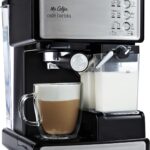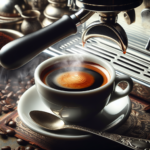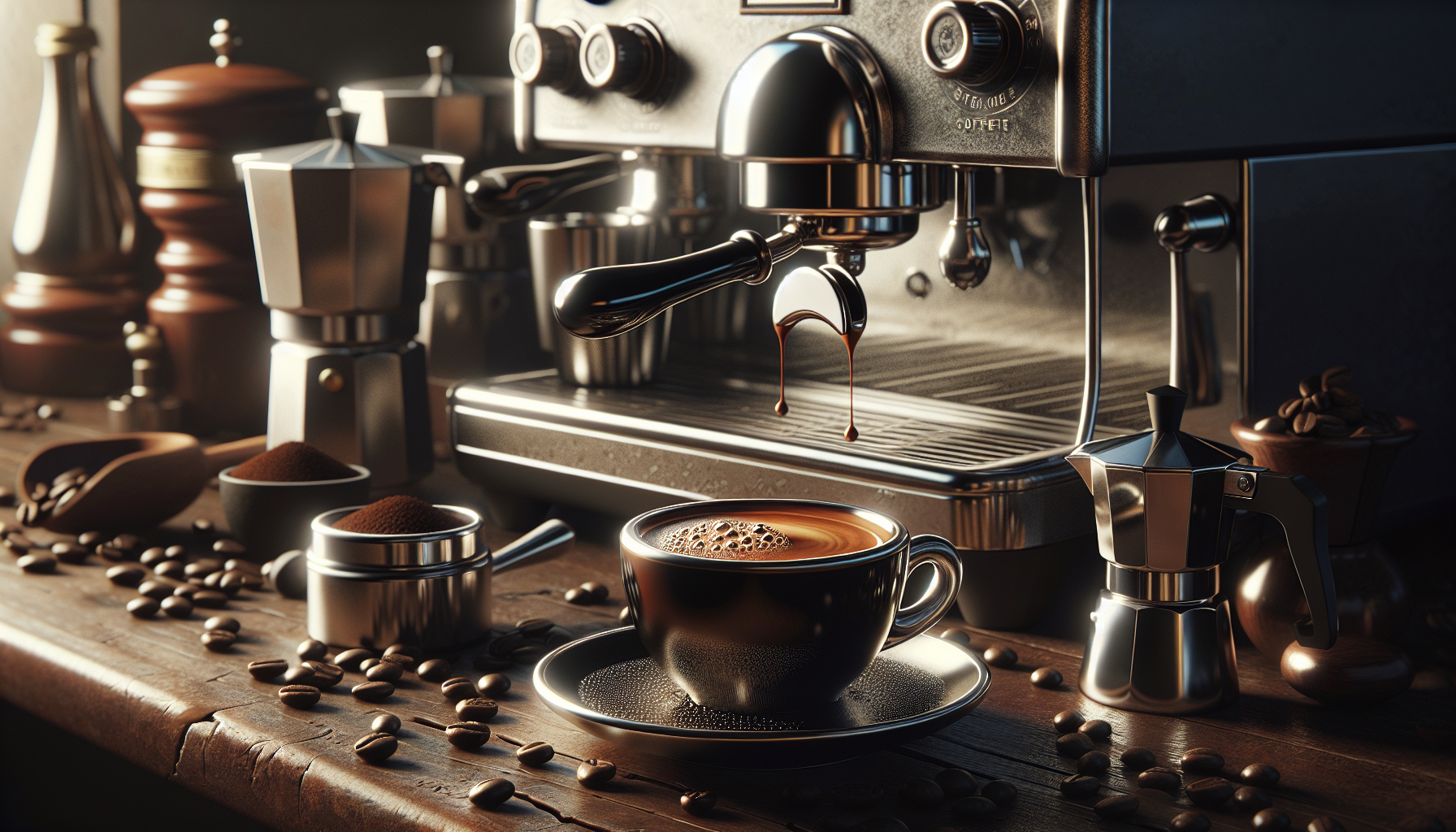
So you’ve heard people talk about espresso and how it’s different from regular coffee, but have you ever wondered what exactly sets espresso apart? Well, the answer lies in its preparation and flavor profile. Unlike drip coffee, espresso is made by forcing hot water through finely ground coffee beans at high pressure. This process results in a strong, concentrated drink that boasts a rich and intense flavor. But that’s not all – the unique brewing method of espresso also contributes to its distinct characteristics, such as its crema and vibrant aroma. So, get ready to discover what makes espresso one-of-a-kind!
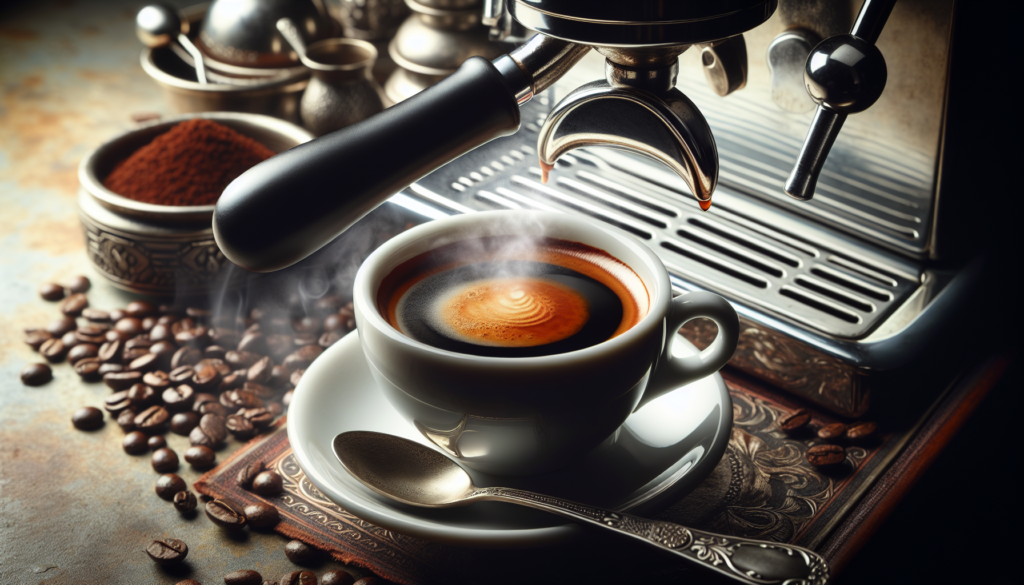
The Origins of Espresso
Italy: The Birthplace of Espresso
Italy is widely regarded as the birthplace of espresso, a popular and celebrated coffee beverage enjoyed worldwide. Espresso originated in Italy in the early 20th century, with its roots deeply ingrained in Italian culture and coffee traditions. Italians have long been passionate about coffee, valuing its preparation as an art form and embracing the rich and intense flavors that espresso provides.
Invention of the Espresso Machine
The invention of the espresso machine in the late 1800s revolutionized coffee brewing and laid the foundation for the creation of espresso as we know it today. A key figure in this innovation was Angelo Moriondo, an Italian inventor who patented the first steam-driven device for making coffee in 1884. This early prototype paved the way for future advancements in espresso machine technology, eventually leading to the development of the more efficient and sophisticated machines used in contemporary espresso preparation.
The Distinctive Brewing Process
The Role of Pressure in Espresso
One of the defining characteristics of espresso is the pressure used during the brewing process. Unlike other coffee brewing methods, which rely on gravity, espresso is brewed under high pressure. The espresso machine forces hot water through finely ground coffee at a pressure of around 9 bars, extracting the rich flavors and oils from the coffee beans in a matter of seconds. This intense pressure leads to a concentrated and bold flavor profile that distinguishes espresso from other types of coffee.
Water Temperature and Timing
In addition to pressure, water temperature and timing play crucial roles in the brewing process of espresso. The water used to make espresso should ideally be heated to around 195°F to 205°F (90°C to 96°C). This specific temperature range helps to achieve optimal extraction, ensuring that the flavors are balanced and delightful. The brewing time for espresso, commonly known as the “shot,” typically takes between 20 to 30 seconds. This precise timing allows for a well-rounded and harmonious taste experience.
The Crema: A Signature Element
What is Crema?
Perhaps one of the most distinctive features of espresso is the crema, a delicate, tan-colored foam that sits on top of the freshly brewed coffee. The crema is visually striking and is formed by emulsifying the oils within the coffee beans with air during the brewing process. It acts as a seal, helping to preserve the flavors and aromas of the espresso while also enhancing the overall sensory experience.
Factors Influencing Crema Formation
Several factors contribute to the formation of crema in espresso. The freshness of the coffee beans is crucial, as older beans tend to lose their oils and fail to produce a substantial crema. Additionally, the grind size of the coffee, the level of tamping pressure applied when packing the coffee into the portafilter, and the coffee’s roast level all influence the quality and thickness of the crema. A well-executed espresso shot with a rich and creamy crema is often an indicator of skilled baristas and exceptional coffee.
Unique Flavor Profile
Bold and Concentrated Taste
Espresso is renowned for its bold and concentrated flavor profile, making it a favorite amongst coffee enthusiasts. The combination of high-pressure extraction and the optimal balance between coffee-to-water ratio creates a concentrated shot that packs a powerful punch of flavor. Espresso is known for its robust, full-bodied taste, often exhibiting notes of chocolate, caramel, and roasted nuts. This intensity and depth of flavor are what sets espresso apart from other brewing methods.
Balancing Bitterness and Sweetness
While espresso has a naturally bitter taste due to the high concentration of coffee solids, skilled baristas strive to achieve a well-balanced flavor profile that combines bitterness with sweetness. The proper brewing techniques and the quality of the coffee beans play key roles in achieving this delicate balance. When properly brewed, espresso exhibits a pleasantly bitter base note that is complemented by hints of sweetness, resulting in a complex and gratifying taste experience.
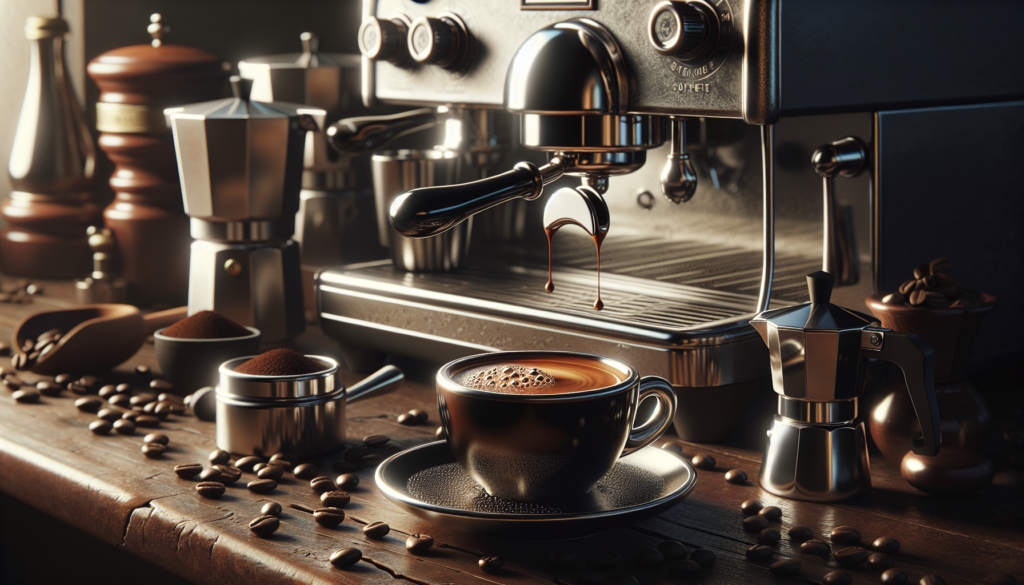
Caffeine Content
How Much Caffeine in Espresso?
Contrary to popular belief, espresso does not necessarily contain more caffeine than regular brewed coffee. While a single shot of espresso typically contains around 63 milligrams of caffeine, the caffeine content can vary depending on factors such as the type of coffee beans used and the size of the serving. However, since espresso is typically consumed in smaller quantities compared to a regular cup of coffee, it may provide a more concentrated caffeine boost in a shorter period of time.
Standard vs. Long Shot
When it comes to caffeine content, it’s important to note the difference between a standard espresso shot and a long shot. A standard espresso shot typically contains 30 milliliters (1 ounce) of liquid, while a long shot is brewed to a larger volume, often double the size. Despite the increased volume, a long shot does not necessarily equate to more caffeine, as the amount of caffeine extracted remains relatively consistent. It is the dilution of the shot with additional water that leads to a milder taste, rather than a significant increase in caffeine content.
Serving Size
The Power of a Shot
The small serving size of espresso is a significant part of its charm and uniqueness. A single shot of espresso is typically served in a small demitasse cup, allowing for a concentrated and intense coffee experience. This small serving size allows you to savor the rich flavors, appreciate the complexity of the taste, and enjoy the quick jolt of energy that espresso provides. It also provides the foundation for many other popular espresso-based beverages.
Single vs. Double Shot
Espresso shots can be categorized into single and double shots, each offering a distinct serving size and intensity. A single shot of espresso is the traditional serving size and contains around 30 milliliters (1 ounce) of liquid. It provides a robust and bold flavor in a small package. On the other hand, a double shot of espresso, as the name suggests, contains approximately 60 milliliters (2 ounces) and offers a more potent and heightened coffee experience. The choice between a single or double shot depends on personal preference and the desired strength of the espresso.
Popular Espresso Beverages
The Classic Espresso
The classic espresso, also known as a “short black,” is the foundation for many popular espresso-based beverages. It is a concentrated shot of espresso, usually served in a small demitasse cup. The classic espresso showcases the true essence of espresso, highlighting the rich flavors, intense aroma, and velvety texture. It can be enjoyed on its own or used as the base for a variety of delicious coffee creations.
Cappuccino, Latte, and Macchiato
Cappuccino, latte, and macchiato are well-known espresso-based beverages that have gained popularity worldwide. Cappuccino consists of equal parts espresso, steamed milk, and microfoam. It is typically topped with a dusting of cocoa or cinnamon. Latte, often referred to as a cafe latte, is made with a shot of espresso and a larger amount of steamed milk, topped with a thin layer of milk foam. Macchiato, translating to “stained” in Italian, is a shot of espresso “stained” with a small amount of milk foam. Each of these beverages showcases the versatility of espresso and offers a different level of richness and flavor complexity.
Cultural Significance
Espresso in Italian Culture
Espresso holds a significant place in Italian culture, playing a central role in the daily lives of Italians. It is a social beverage that fosters connection, as people gather in cafes to enjoy espresso and engage in lively conversations. The art of making and consuming espresso is a revered tradition, with baristas honing their skills and perfecting the craft over years of practice. Espresso is also deeply intertwined with Italian culinary traditions, often enjoyed after meals as a satisfying and digestif.
Espresso Houses Worldwide
The popularity of espresso has transcended geographical boundaries and has become an integral part of coffee cultures worldwide. Espresso houses and specialty coffee shops can be found in various countries, catering to the growing demand and appreciation for high-quality coffee beverages. These establishments serve as hubs for coffee enthusiasts, providing a space to explore different espresso variations, learn about coffee origins, and appreciate the artistry behind the brewing process.
Espresso Variations
Ristretto
Ristretto is an espresso variation that offers a more concentrated and intense coffee experience. It is achieved by using the same amount of coffee beans as a regular espresso but extracting it with a shorter brew time and less water. The result is a more intense and flavorful shot that showcases the essence of the coffee beans in a highly concentrated form. Ristretto epitomizes the pursuit of flavor perfection and is favored by those seeking a bold and robust espresso experience.
Lungo
Lungo, translating to “long” in Italian, is the opposite of a ristretto. It is brewed in a larger volume using more water and a longer extraction time, resulting in a milder and less concentrated espresso. Lungo shots offer a smoother and more dilute flavor compared to a standard espresso shot. This variation allows for a larger serving size and a more extended coffee experience while preserving the distinct taste of espresso.
Doppio
Doppio, meaning “double” in Italian, refers to a double shot of espresso. It is brewed using a larger amount of ground coffee, typically yielding a serving size of around 60 milliliters (2 ounces) of liquid. Doppio offers a stronger and more potent flavor experience compared to a single shot, capturing the essence of espresso in a higher concentration. It is the go-to choice for those seeking an extra dose of caffeine and a heightened sensory experience.
Art of Brewing Espresso
Grinding and Tamping
An essential aspect of brewing espresso is the proper grinding and tamping of coffee beans. The grind size is crucial in determining the extraction rate and flavor profile of the espresso. Finely ground coffee is typically used for espresso, as it allows for a high surface area contact with water, promoting optimal extraction. Tamping, the process of compressing the coffee grounds evenly in the portafilter, ensures a consistent flow and pressure during the brewing process, leading to a well-balanced shot with a rich crema.
Espresso Machine Maintenance
To consistently brew high-quality espresso, regular machine maintenance is essential. Espresso machines should be cleaned and descaled regularly to remove any built-up residue or minerals that may affect the taste and performance of the machine. Proper maintenance includes backflushing, cleaning the group head, and purging the steam wand after each use. Regular maintenance not only enhances the longevity of the machine but also ensures that each shot of espresso is brewed to perfection.



